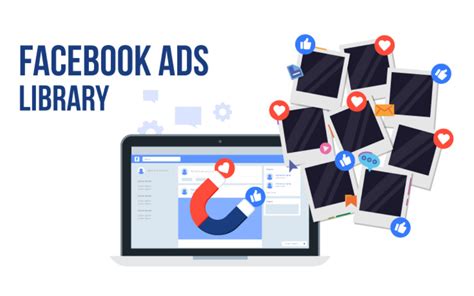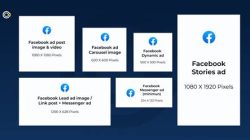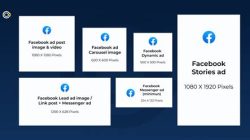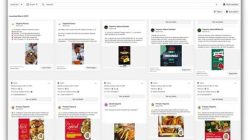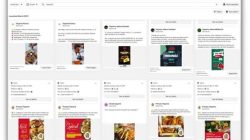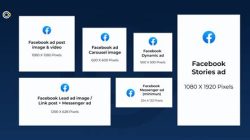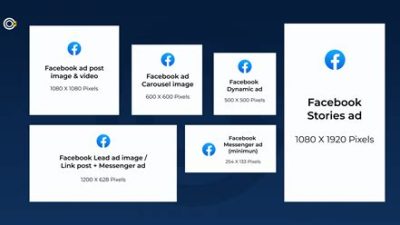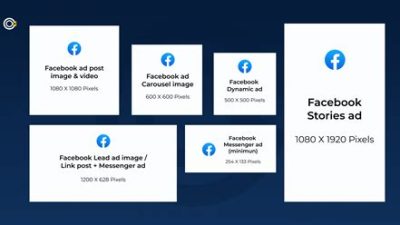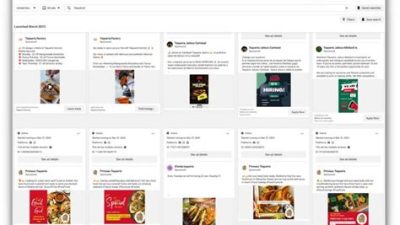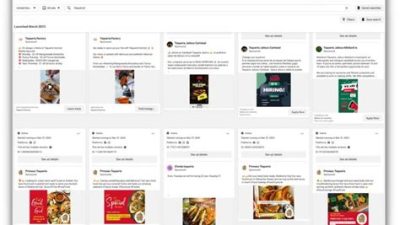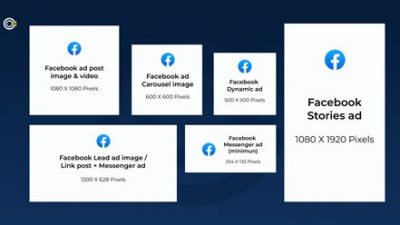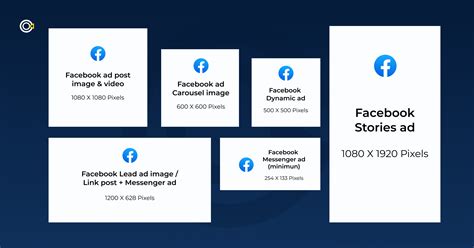
If you’ve ever tried running ads on Facebook, you know that getting the dimensions right is key to making your campaign pop! With different formats and sizes available, it can be a bit overwhelming. But don’t sweat it! In this article, we’ll break down everything you need to know about Facebook ad sizes so that you can create eye-catching ads that fit perfectly and grab attention. Let’s dive in and make your ads shine!
Understanding Facebook Ad Formats
Facebook offers a variety of ad formats to cater to different marketing goals and target audiences. Whether you’re looking to drive traffic to your website, increase brand awareness, or boost sales, understanding these formats is essential. The main ad types include image ads, video ads, carousel ads, slideshow ads, and collection ads. Each of these formats has its unique advantages, and knowing when to use them can make a big difference in your campaign’s success.
Image ads are the simplest of the bunch and are ideal for businesses just starting with Facebook advertising. These ads allow you to share a single photo with a captivating caption, making them perfect for promoting products or services that are visually appealing. On the other hand, video ads are great for storytelling—ideal if you want to demonstrate your product in action or share customer testimonials. Carousel ads let you showcase multiple images or videos in a single ad, which can tell a deeper story or showcase different features of your product. Slideshow ads, being a lightweight alternative to videos, combine multiple images and text to create a video-like experience. Finally, collection ads allow users to browse through a catalog of products in a visually appealing format. Understanding when to use each format based on your goals is crucial for maximizing engagement.
Ad Size Specifications
When it comes to Facebook ad size, each format comes with its own set of size specifications that you need to adhere to in order to ensure the best performance possible. For instance, image ads typically perform best with dimensions of 1200 x 628 pixels, while video ads should have a minimum resolution of 1280 x 720 pixels. Carousel ads have specific image size requirements as well; ideally, each image should be a square, with dimensions of 1080 x 1080 pixels.
Moreover, while Facebook does allow for some flexibility regarding ad dimensions, sticking to these guidelines ensures your ads appear professional and appealing on all devices. Poorly sized images can distort the quality, making your brand appear untrustworthy or unprofessional, potentially deterring potential customers. Hence, reviewing Facebook’s latest Creative Hub or Ads Manager for the most accurate and up-to-date specifications is always a good practice.
Importance of Ad Text and Graphics
While the size of your Facebook ad is crucial, the text and graphics you incorporate can significantly influence its effectiveness as well. Facebook ads allow you to include headlines, primary text, and call-to-action (CTA) buttons, all of which should be crafted thoughtfully. The primary text should be short and direct, conveying your message in a compelling manner that encourages users to click. This is where you grab the attention of your audience; keep it engaging yet informative.
The headline is another vital element of your ad. It’s the first thing users will see, so it must be catchy and relevant to your audience’s interests. Good CTAs such as “Shop Now,” “Learn More,” or “Sign Up” guide users on what action to take next. Adding eye-catching graphics or images is equally essential—ensure these visuals align with your brand’s messaging and are visually appealing to grab viewers’ attention. Remember, the combination of effective text, striking graphics, and proper ad size can lead to a powerful ad that resonates with your audience.
Testing and Optimizing Ad Sizes
No two audiences are the same, which is why testing various ad sizes and formats is necessary for achieving the best results. Facebook allows businesses to run A/B tests, enabling marketers to compare different versions of their ads by tweaking factors like image size, text, or even CTA buttons. When you test various aspects of your ads, you gather valuable data regarding which combinations resonate best with your audience. This iterative process can lead to increased engagement and conversions over time.
Optimization isn’t just a one-time effort; it’s an ongoing process. Keep an eye on the performance metrics of your ads, such as click-through rates (CTR) and engagement levels. These will inform your strategies moving forward. If you notice certain ad sizes or formats are yielding better results, lean into those while continually exploring new ideas. Staying attuned to changes in Facebook’s algorithms and ad policies will also give you the upper hand, keeping your campaigns fresh and effective.
Conclusion: Mastering Facebook Ad Size and Format
In conclusion, mastering Facebook ad size and format is key to running successful advertising campaigns that drive results. Understanding the nuances of different ad formats, their size specifications, and how to effectively craft your messaging can significantly impact your marketing success. Not forgetting the importance of ongoing testing and optimization, these practices can help you refine your strategies and make informed decisions to continually improve your ad performance. As you apply the knowledge shared in this article, you can expect to see better engagement from your audience and, ultimately, drive more conversions through your Facebook advertising efforts.
Understanding Facebook Ad Sizes: A Comprehensive Guide
1. Importance of Choosing the Right Ad Size
When it comes to advertising on Facebook, the size of your ad plays a critical role in how effectively it captures the audience’s attention and drives engagement. Social media is a visual platform, and users are continuously bombarded with content from various brands. Thus, the size of your Facebook ad can make a significant difference in its visibility and performance. Properly optimized ad sizes ensure that your visuals appear sharp and professional, which can enhance your brand’s credibility and trustworthiness.
Choosing the right ad size also influences other aspects, such as loading speed and user experience. Ads that are not correctly sized may load more slowly, leading users to scroll past them without a second glance. In a world where attention spans are remarkably short, having an eye-catching ad that is perfectly sized for Facebook’s platform is crucial for capturing and retaining viewer interest. With so many ads competing for attention, a well-designed ad with the right dimensions can significantly elevate your marketing strategy.
Moreover, Facebook allows various ad formats, and each format has its specific size requirements. From standard image and video ads to carousel and slideshow formats, understanding these nuances will help you effectively utilize the platform. Tailoring your ad size not only ensures that it displays correctly across devices but also maximizes your return on investment (ROI) by encouraging clicks, conversions, and ultimately, sales.
2. Common Facebook Ad Sizes
Facebook offers numerous advertising options, each with its own recommended sizes to create compelling campaigns. Below is a table showcasing the most common ad sizes you should be aware of:
| Ad Format | Recommended Size |
|---|---|
| Image Ads | 1200 x 628 pixels |
| Video Ads | 1280 x 720 pixels |
| Carousel Ads | 1080 x 1080 pixels (per image) |
| Collection Ads | 1200 x 628 pixels |
| Story Ads | 1080 x 1920 pixels |
This table highlights some of the most important ad formats and their dimensions. By adhering to these specifications, you ensure your ads not only look great but also perform well. Ad formats evolve over time, so it’s essential to regularly check Facebook’s official documentation for any updates or changes to size recommendations. It’s important to note that different ad placements may require different sizes or formats; for instance, mobile users may consume content differently than desktop users. Hence, creating variations of your ads to fit these unique requirements can contribute to greater overall performance.
3. Best Practices for Facebook Ad Design
Designing effective Facebook ads involves more than simply adhering to size regulations. It’s about creating content that resonates with your audience while maintaining clear visibility and professional quality. Start by using high-resolution images or videos that clearly depict your product or service. Lower quality images can detract from your brand image, so investing in quality visuals is a must.
Another best practice is to integrate your brand’s core messaging within the ad itself. This could mean including a compelling headline and concise, engaging copy that complements the visual elements without overwhelming them. Focus on creating a clear call-to-action (CTA) that guides users on what to do next, whether it’s ‘Shop Now,’ ‘Learn More,’ or ‘Sign Up.’ A strong CTA helps direct viewer intent and can lead to higher conversion rates.
Beyond visual quality, it’s wise to consider Facebook’s ad policies. Make sure your ads are authentic, not misleading, and adhere to the platform’s community standards. Familiarizing yourself with what is and isn’t allowed can save you time and resources in the long run. Regularly running A/B tests to evaluate how different ad sizes, formats, and designs perform will also provide insights into what resonates best with your audience, allowing you to refine your strategy continually.
4. Effects of Mobile vs. Desktop Ad Sizes
The way users interact with Facebook can vastly differ between mobile and desktop, and it’s essential to understand these differences when creating ad campaigns. Mobile users make up a significant portion of Facebook’s audience, so optimizing your ads for mobile viewing is critical. For mobile, vertical and square formats tend to perform better because they take up more screen space, making them more noticeable.
Desktop users, on the other hand, often prefer landscape formats as they are accustomed to seeing wider visuals. Therefore, it’s prudent to tailor your ads to fit the device your target audience is most likely to use. Designing ads specifically for mobile users also means considering the loading times, as larger images may take longer to load, reducing the likelihood that a potential customer will wait around to see your ad.
Additionally, the environment in which people view Facebook ads plays a significant role in user behavior. Mobile users often browse while on-the-go and are likely to respond to short, eye-catching content. In contrast, desktop users might be more patient and willing to engage with slightly longer content. Analyzing audience insights and analytics related to device usage can significantly influence how you design your ad’s visuals, layout, and copy.
5. Frequently Asked Questions About Facebook Ad Sizes
Q1: What is the ideal size for a Facebook ad?
The ideal size for a Facebook ad varies depending on the ad format, but a common recommended size is 1200 x 628 pixels for image ads.
Q2: Can I use the same image for different ad formats?
While you can use the same image, it’s recommended to adjust sizes according to each specific format to optimize performance.
Q3: Are there any restrictions on image text?
Yes, Facebook recommends limiting text on images to 20% to ensure better engagement rates.
Q4: What is the best format for video ads?
The best format for video ads is usually 1280 x 720 pixels, but aspects like duration and content should also be considered.
Q5: How can I create a carousel ad effectively?
To effectively create a carousel ad, use 1080 x 1080 pixels images, showcase multiple products, and include engaging headlines.
Q6: What happens if my ad exceeds the recommended size?
An oversized ad might be cropped, distorted, or may not be approved by Facebook’s ad review system.
Q7: Can I change the ad size after it’s been published?
Once your ad is published, you can’t change the size; however, you can create a new ad with the correct dimensions.
Q8: How does the placement of my ad affect its size requirements?
Different placements like feed, stories, or right column have unique size requirements to optimize performance and visibility.
Q9: Is there a specific size for Facebook story ads?
The recommended size for Facebook story ads is 1080 x 1920 pixels, primarily designed for a vertical viewing experience.
Q10: How do I know which ad size will suit my campaign?
Consider your target audience, the type of content, and the specific goals of your campaign when selecting the ad size.
Q11: Do Facebook’s ad size requirements change frequently?
Yes, Facebook updates their guidelines, so it’s crucial to keep up with their official documentation for the latest information.
Q12: What is the impact of using unoptimized images?
Unoptimized images can lead to slower load times, poor display quality, and decreased engagement rates.
Q13: What file formats are allowed for Facebook ads?
Facebook accepts various formats including JPG, PNG for images, and MP4, MOV for videos, but it’s best to consult their guidelines frequently.
Q14: How can I test the performance of my Facebook ads?
You can use A/B testing to analyze the performance of different ad sizes, formats, and content to identify what works best.
Q15: Should I prioritize mobile ad sizes over desktop sizes?
It’s wise to do both, but given the growing mobile user base, prioritizing mobile sizes can often yield better engagement results.
Wrapping It Up!
Thanks for sticking around and checking out our insights on Facebook ad sizes! We hope you found the info helpful and maybe even a little fun. Remember, picking the right size can make all the difference in getting your message out there. Don’t forget to swing by again for more tips and tricks on mastering your social media game. Until next time, happy advertising!
